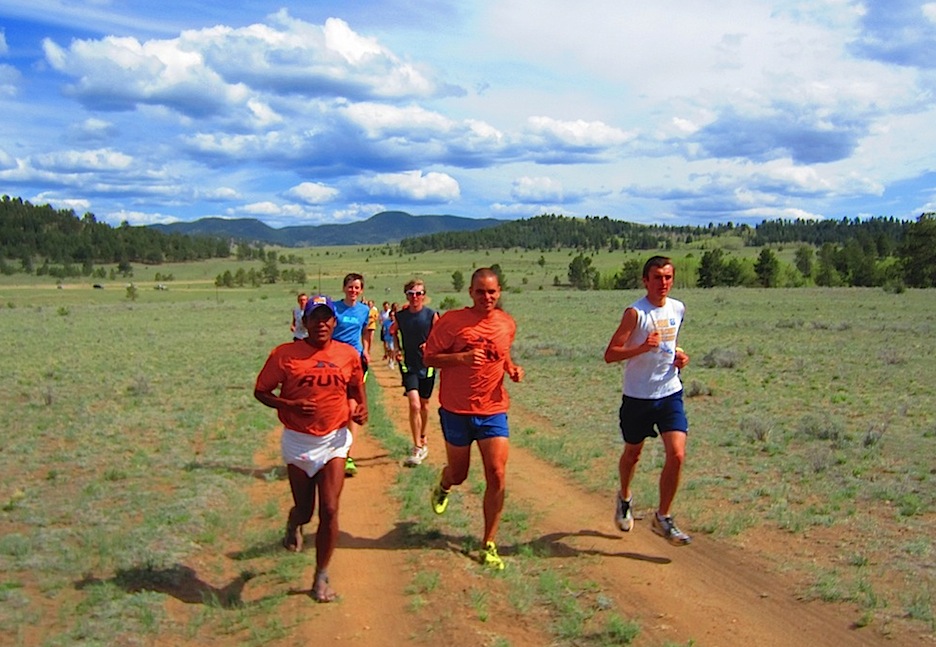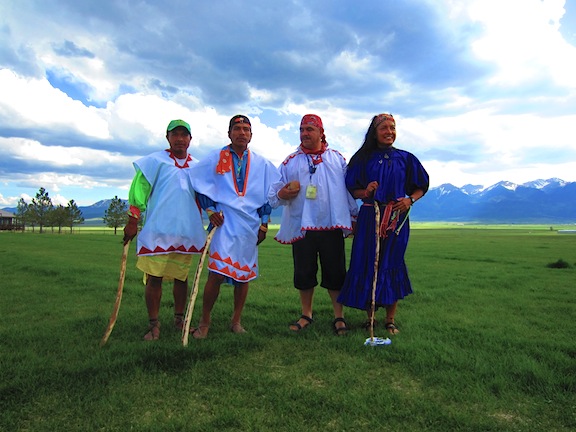
Ills of modern culture catching up to the ‘Running People’
The Tarahumara of Mexico’s Copper Canyon country are known as the “Running People,” or Raramuri, as depicted in Christopher McDougall’s bestselling book “Born to Run.”
But decades of social change in the region also have brought about changes in diet and activity level that affect the health and fitness of many of these indigenous people. As civilization has advanced upon the canyons, so has the ready availability of processed foods, as well as motorized transportation, and the accompanying health problems such as cardiovascular disease, arthritis and diabetes.
A team of scientists and cardiologists from Harvard University is now preparing a study comparing the incidence of heart disease and arthritis among those Raramuri who continue to live a traditional lifestyle with those who have moved to civilization.
Gary Ziegler, an archaeologist and longtime adventure-travel guide in Copper Canyon, has seen firsthand the changes that have taken place in the Tarahumara culture since he first rode into Batopilas by horseback in 1973, long before the area was largely developed or became a popular tourist destination.
He says the changes that have taken place are classic acculturation.
“They survived all these years. They survived the Spanish. They survived the church. They survived the Mexican Revolution,“ he says. “They consider themselves superior and separate from the Mexican culture.”
But the coming of the railroad changed all that in the 1960s,” Ziegler says. Now the question is whether the Tarahumara will survive the advance of modern culture and the ravages of health that go along with it.
As many as 12,000 Tarahumara — many of them displaced by extensive crop failure, drug trafficking, exploitation by timber companies and tourism — have left their ancestral farms and now live in urban areas such as Chihuahua City, Juarez, Cuauhtemoc and other towns in northern Mexico, according to Mickey Mahaffey, who has been a guide in Copper Canyon for 18 years and is also helping the Tarahumara through relief programs and agricultural projects.
Mahaffey says the Tarahumara who continue to live traditionally and in more remote locations still adhere to their traditional diet — corn, beans, squash, potatoes, chiles and calites (greens). He says they eat very little meat, basically only at their traditional fiestas when they kill a goat or cow. These Tarahumara in remote areas, he says, have little opportunity to work for money therefore they have little to spend on junk food, plus the access to processed foods is limited.
On the other hand, he says those who have moved to towns and cities have more opportunities to work for money and many can be seen begging in the streets. These Tarahumara have very limited access to fresh foods and eat enormous amounts of processed and junk food.
“They are consuming massive amounts of soda and potato chips,” Mahaffey says. “They love Maruchan, a packaged soup that is very cheap and basically nothing more than chemicals. Also, pasta, tuna, sardines, milk, cheap cooking oil, sugar and salt.”
He notes these Raramuri also tend to drink a lot of factory-produced beer, as opposed to the traditional corn beer still made by those in the rural farming areas.
Mahaffey says the Harvard study will be comparing the health of 30 urban Tarahumara with 30 of those who still live in the traditional lifestyle. He says it is hoped the research sheds more light on the effects of changing diet, particularly in relation to heart and bone disease.
Dave Hensleigh, who runs a tour guide operation in Copper Canyons and also works to bring top Raramuri runners to events in the U.S., says he’s also noticed a trend toward processed foods.
“When you are around down there there’s a preponderance of sugar drinks, chips, pastries, white breads,” he says.
Moreover, he also sees something else going on — less physical activity, even among those who are successful competitive runners.
He compares one Tarahumara runner he works with — Arnulfo Quimare, who still lives on a farm 12 rugged and mountainous miles from the nearest town and runs wherever he goes, to a younger very successful runner — Miguel Lara, who lives near civilization and hitches rides but trains more like a competitive runner in the U.S.
He notes that part of being the running people was the actual running they did in their daily work and travel and through their traditional footraces and Rarajipari contests, a ball game that involves long-distance running. These traditions are both on the decline.
“I tell them, you’ve got the heritage of being the running people but you’re not the running people now,” Hensleigh says.

Traditional active lifestyle activities of the Tarahumara, such as Rarajipari, a ball game that involves distance running, are on the decline.
In addition, most of the more successful competitive Raramuri grew up herding goats on foot as children. Now most Tarahumara children are in school for large parts of their days.
“We’re not going to stop the change and we shouldn’t,” Hensleigh says. “This is what Miguel wants to do. However, could we do some things to support healthy food going into those communities? Yes, of course.”
Hensleigh is doing his part by organizing the Copper Canyon Chicken Project, which supplies families with laying hens to produce eggs. The program supplies a dozen hens to families in need.
“It’s truly sustainable, he says. “Twelve chickens supply more than a family can use and we say just give the extra to your neighbors.” This past year the project provided chickens to more than 80 families.
While projects like this are just a small step against the tide of bad food sweeping across the Raramuri, it’s small steps that lead to bigger strides.
Natural running expert and educator Mark Cucuzzella offers another interesting insight into the plot of the Raramuri.
“It’s interesting the widely held belief, perhaps even a myth, that these people are ‘healthy’ even without the junk,” says Dr. Cucuzzella, who also heads up the popular Natural Running Center blog. ”Maybe they are now developing Syndrome X (insulin-resistant/diabetic) along with the rest of the developed world, and the junk is only accelerating it.”
In other words, it’s very possible, with average life expectancy of somewhere in the mid-40s, many Tarahumara eating their traditional diet probably died before the metabolic disorder set in. Now with the added junk and less activity the process is just that much quicker.
“Humans adapt to survive, not necessarily to be healthy,” he says.








